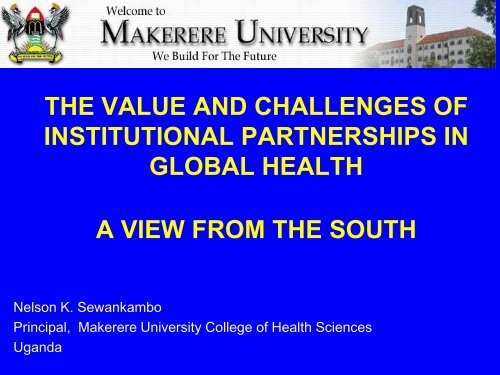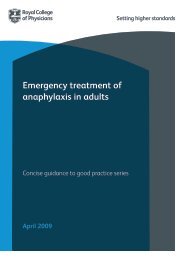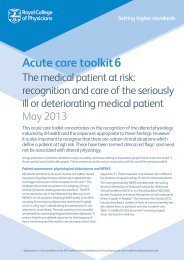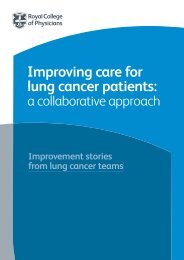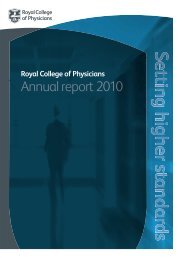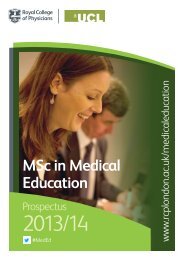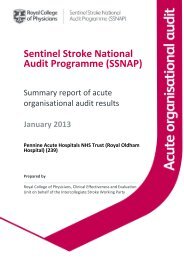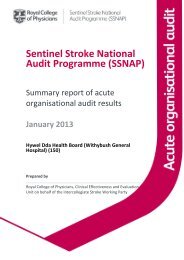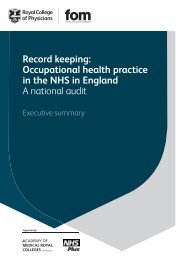Nelson Sewankambo - A view from the south
Nelson Sewankambo - A view from the south
Nelson Sewankambo - A view from the south
- No tags were found...
You also want an ePaper? Increase the reach of your titles
YUMPU automatically turns print PDFs into web optimized ePapers that Google loves.
THE VALUE AND CHALLENGES OFINSTITUTIONAL PARTNERSHIPS INGLOBAL HEALTHA VIEW FROM THE SOUTH<strong>Nelson</strong> K. <strong>Sewankambo</strong>Principal, Makerere University College of Health SciencesUganda
Outline of <strong>the</strong> Presentation• The context• Benefits• Risks / Challenges• Improving partnerships
Context: Global Health• Interest in global health by HIC• Increased funding globally• A new era for LMIC institutions• Insufficient funding <strong>from</strong> LMICs
Context: Power ImbalanceHICLMICSome Reasonsa) Inadequate institutionalcapacityb) Very unequal resourcesc) Often initiated <strong>from</strong> <strong>the</strong>north, externally driven andnot in sync with localpriorities
Academic Partnerships betweenRich and Poor CountriesLancet 2008; 371:1055-6• “Partnerships in <strong>the</strong> context of an unevenplaying field and massive disparities inresources are clearly difficult, despite <strong>the</strong>best intentions”– Competitive pressures and financial demands– Should we shape our institutions in <strong>the</strong> imageof partner institution– Need for partners in <strong>the</strong> <strong>south</strong> to have a realvoice, ownership & in management
Inequities In Collaboration• Very unequal relationships– Decision making process• Publication rights• Ownership: Data, specimens, equipment, authorship• Intellectual property rights• Dispute settlement• Lack of transparency / opaque transactions
Just Health: Meeting Health Needs FairlyNorman Daniels, Cambridge University Press, 2008.
What Do We Owe Each O<strong>the</strong>rGlobally• “If we are one global Community shouldwe not care about global healthinequalities as much as we care abou<strong>the</strong>alth inequalities within our own setting”?• If, however, we are self-contained nationstates, what business is it of ours if o<strong>the</strong>rshave worse health?Norman Daniels
Benefits of Partnerships• Depend on what point of <strong>view</strong> onelooks at <strong>the</strong> partnership• Need convergence of <strong>view</strong>s and corevalues e.g. minimizing inequities• Capacity development: Personnel,institutional, environment• Improvements in academic / serviceperformance (quantity and quality)
Makerere-Case Western ResearchCollaboration• Improving careand preventionof TB
Benefits for All• Mutual benefit: A must– Mutual accountability, trust & respect– Joint products• Mutual learning• Effective communication a pre-requisite
Elements for a SuccessfulCollaboration• Good Leadership,..…… at all times• Shared passion, commitment by all. Itmust come and be driven <strong>from</strong> <strong>the</strong> heart• Built on <strong>the</strong> principle of mutual reciprocalbenefit creating a win-win situation for all• Understanding <strong>the</strong> economic, social,cultural & political realities of <strong>the</strong> hostenvironment• Long term partnership is critical
MU-JHU Research collaboration
O<strong>the</strong>r Ingredients for a SuccessfulCollaboration• Mutual respect and accountability• Adequate resources matching <strong>the</strong> task• Sensitivity & responsiveness to local needs• Equitable distribution of risks and benefits
Makerere and Karolinska Institutet Sign forJoint PhD 2003
Distribution of PhD Applicants by Countryand Gender: Merit Vs EquityCountryCategoryPhDApplicants bygenderMalen (%)Femalen (%)No. ofapplicantsShortlisted n (%)Shortlisted bygenderMalen (%)Femalen (%)AllCountries197 127(64.5)70(35.5)Kenya 68 38 (55.9) 30(44.1)28 (14.2) 16 (59.3) 11 (40.7)4 (5.9) 2 (50.0) 2 (50.0)Rwanda 6 5 (83.3) 1 (16.7) 0 (0) 0 (0) 0 (0)Tanzania 33 21 (63.6) 12(36.4)Uganda 90 63 (70.0) 27(30.0)8 (24.2) 5 (62.5) 3 (37.5)16 (17.8) 10 (62.5) 6 (37.5)
Requirements for Success as aNetwork• Have a common purpose and work toge<strong>the</strong>r• Complex institutional and personal relationships• Regular attention to <strong>the</strong> network to be effective• Need structures & decision-making mechanisms• Work-plan with timelines and deliverables• Good communications & engagement strategies• Manager(s) to ensure work plan implementation
Risks of Partnerships• May become a free enterprise, not strategic• Cost of managing partnerships• Cannibalizing <strong>the</strong> core and retard growth• Distorting institutional structure, governance• Divert staff <strong>from</strong> what <strong>the</strong>y should be doing• Political, legal & ethical risks
Ethical Issues• Well recognized in research• Ethical validity in education• Ethical considerations for short-termexperiences by trainees in global health• Ethical coherency when medical studentswork abroadLancet 2008; 371: 1133, JAMA 2008; 300: 1456• Impact on student, patient and sendingcommunities
Many Partnerships: A ManagementChallenge• How to fully harness positive energies• Inadequate institutions framework(s)• Creation of parallel systems• Mini-institutions within <strong>the</strong> institution• Duplication of & competition for resources
Mitigating Risks is Critical• The Swiss principalshttp://www.kfpe.ch/download/KFPE_ImpactStudy• RAWOO principlesNe<strong>the</strong>rlands Development Assistance Research Partnership2001, Meeting Report 1999• Costello and ZumulaBMJ (312) 827-829The above lack a strong sou<strong>the</strong>rn voice• Partnership Assessment Toolkitwww/ccghr.ca
More Towards Mitigation of Risks• Short term funding cycles lead to uncertainfuture, threaten sustainability• Capacity building as essential element• Lack of core funding• Huge differences in overheads allowed• Differences in work cultures
Institution-to-Institution Partnerships:A Preferred Approach• Definition of purpose e.g partnership• Engaged top leadership of JHU schools• Long-term engagement approx 30 yrs• Better coordination, Better resource use• Jointly raise resources for defined tasks• MoUs
Improving International ResearchContractingDavid A Sack a , Vanessa Brooks a , Michael Behan a ,Alejandro Cravioto a , Andrew Kennedy b , CarelIJsselmuiden b & <strong>Nelson</strong> <strong>Sewankambo</strong> ca. International Centre for Diarrhoeal Disease Research,Bangladesh, Dhaka, Bangladesh.b. b. Council on Health Research for Development, 1-5 Routedes Morillons, 1211 Geneva, Switzerland.c. Faculty of Medicine, Makerere University, Kampala,Uganda.Bulletin of <strong>the</strong> World Health Organization 2009;87:487-487.doi: 10.2471/BLT.08.058099
Monitoring & Evaluation (M&E)M&E should occur at all stages ofpartnerships: Inception, implementation anddissemination and wrapping up (“Good Endingand New Beginnings”)www/ccghr.ca
Maximizing Value• Inequitable partnerships are common – needfor improvement• Using lessons <strong>from</strong> N-S to build S-S• An ethics model• Working towards more equitablepartnerships
Maximizing Value of Partnerships:Issues for Consideration• How to choose partnerships?• How to measure success of a partnership?• When to say no in <strong>the</strong> face of scarcity?• How to ensure equitable partnerships so that<strong>the</strong> weaker ones ALSO emerge winners?• Need a platform for effective negotiation
Equitable Partnerships? What do<strong>the</strong>y look like?Need to be defined clearly


